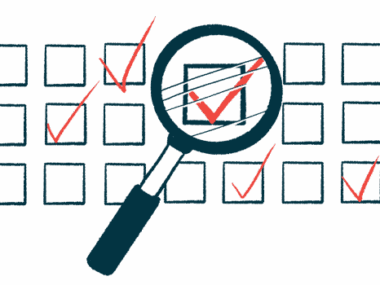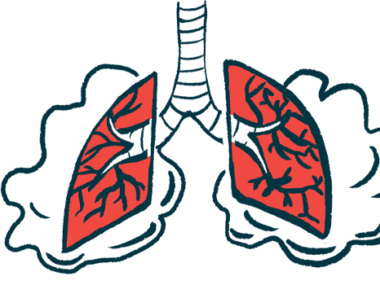Access to lung rehab centers limited by distance for millions in US
Majority of programs around urban areas, while 14 million live in rural regions
Written by |

Travel times limit access to pulmonary rehabilitation programs to help people with chronic lung conditions, such as chronic obstructive pulmonary disease (COPD), a U.S. report revealed.
Data showed about 80% of people live within a 30-minute drive of a rehabilitation site, mostly those who reside within major urban and suburban areas. In contrast, over 14 million people, particularly in the country’s western and midwestern regions, must travel more than an hour to reach a rehabilitation center.
“The disparities highlighted in our study underscore the need for innovative solutions to improve access to [pulmonary rehabilitation] services for those in underserved areas,” the researchers wrote.
The research letter, “Accessibility of Pulmonary Rehabilitation in the US,” was published in the journal JAMA Network Open.
Pulmonary rehabilitation linked to better outcomes for COPD patients
COPD is a chronic inflammatory disease of the lungs, marked by airway blockages, wheezing, cough with mucus, and shortness of breath. Various disease treatments have been approved to help patients’ manage, working to ease COPD symptoms.
Pulmonary rehabilitation is a non-drug therapeutic approach for COPD and other conditions, such as interstitial lung diseases (lung scarring) and pulmonary hypertension. It combines supervised exercise and educational sessions designed to manage the illness better, aiming to improve patients’ overall health and quality of life.
Such techniques can help with conserving energy, supplemental oxygen therapy, and taking advantage of periods of higher energy.
“It has been demonstrated across almost the entirety of pulmonary medicine to improve patient health and patient-reported outcomes,” Peter Kahn, MD, a pulmonary and critical care fellow at Yale School of Medicine, in Connecticut, and one of two study authors, said in a university news release. “Through these programs, patients not only gain a more comprehensive understanding of their condition, but also improve their exercise tolerance in a meaningful way.”
Despite its demonstrated efficacy, access to pulmonary rehabilitation programs across the U.S. remains a problem, the researchers noted.
The team used large-scale geographic datasets to measure the time it takes to travel to locations that provide pulmonary rehabilitation.
“Technologies enabling travel time computations at a massive scale are not just innovative but transformative, providing us with nuanced insights,” said Walter Mathis, MD, a psychiatrist and health services researcher at Yale School of Medicine, and the study’s other author.
Rehabilitation site locations were obtained from the livebetter.org website, data on population and ethnicity came from the American Community Survey 2021, and urbanicity data from the U.S. Census Urban Areas. Minimum travel times were calculated from every census block to the 25 closest sites, with analysis limited to the contiguous 48 states and Washington, D.C.
For 14 million people, nearest rehab center is over an hour away
Of the 1,759 pulmonary rehabilitation sites identified, 1,494 (84.9%) were located in urban areas. The shortest travel times to these sites were in densely populated urban areas and major cities, with about half (47.8%) of individuals living within a 15-minute drive. An additional 32.5% live within a 30-minute drive, which includes those in suburban areas.
Access, however, was limited for people in rural and sparsely populated regions, particularly in the West and Midwest. Travel times often exceeded 30 minutes, with many residents — representing more than 14 million people — needing over an hour to drive to the nearest program location.
When assessed by race or ethnicity, 26.9% of American Indian and Alaska Native populations lived within a 15-minute drive to a pulmonary rehabilitation program, while 29.7% lived more than an hour away. These disparities differed markedly from other groups, which included Asian, Black, Hispanic, and white populations.
“Access to programs within a reasonable amount of travel time is key,” Kahn said. “First, many patients with chronic respiratory conditions require oxygen supplementation. Long commutes may mean they have to transport multiple oxygen tanks or battery supplies, which may cause patients to forgo the treatment. Second, because exertional intolerance is a symptom of these diseases, long travel can be incredibly taxing and also serve as a barrier to participation.”
Researchers suggested that telemedicine and virtual rehabilitation can help bridge these gaps in the short term, but “long-term solutions will require collaboration between policy makers and those providing health care to those in underresourced areas,” they wrote.
“Insurance payers, both government and private, do not sufficiently reimburse pulmonary rehabilitation programs for the people, equipment, and supplies needed to effectively run them,” Kahn said. “That represents a barrier to offering these programs. Of equal importance, insurance limits how many rehabilitation sessions a patient can attend.”
He added: “If you’re someone with a chronic respiratory condition like advanced COPD, you really need ongoing therapeutic sessions. But right now, payers limit patients to a small number of lifetime sessions relative to the long-term burden of the disease. And that needs to change.”






